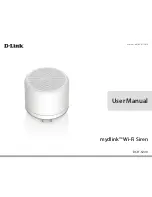
15. DHCP Server
ROX™ v2.2 User Guide
140
RuggedBackbone™ RX5000
15. DHCP Server
15.1. DHCP Fundamentals
Dynamic Host Configuration Protocol (DHCP) is a method for centrally and consistently managing IP
addresses and settings for clients, offering a variety of assignment methods. IP addresses can be
assigned based on the Ethernet MAC address of a client, sequentially, or by using port identification
provided by a DHCP relay agent device.
15.1.1. DHCP Network Organizations
The information to assign addresses in DHCP is organized to deal with clients at the interface, subnet,
pool, shared network, host-group, and host levels.
Interfaces specify the IP interface to which the client sends a request.
Subnets control settings for each subnet that DHCP serves. A subnet can include a range of IP address
to hand out to clients. Subnets contain groups, pools and hosts. Only one subnet can contain dynamic
IP address ranges without any access restrictions on any given physical port, since DHCP doesn’t know
which subnet a client should belong to when the request is received.
Pools contain ranges of IP addresses to hand out to clients with access rules to determine which clients
should receive addresses from that pool.
Shared networks are used when multiple subnets should be served by a single physical port. This
applies both when using a DHCP relay agent connected to the port with additional subnets behind the
relay agent, or when multiple virtual networks exist on one physical interface. Each subnet then gets its
own subnet definition inside the shared network rather than at the top level. Shared networks contain
subnets, groups and hosts.
Host-groups allow identical settings to be created for a group of hosts, making it easier to manage
changes to the settings for all the hosts contained within the group. Groups contain hosts.
Host entries assign settings to a specific client based on its Ethernet MAC address.
15.1.2. Option 82 Support with Disable NAK
If DHCP relay clients (option 82 clients) are used on the same subnet as the DHCP server, some
clients will try to renew a lease immediately after receiving it by requesting a renewal directly from
the DHCP server. Because the DHCP server is only configured to provide the lease through a relay
agent configured with the correct Option 82 fields, the server sends the client an NAK to disallow the
lease. Enabling Option 82 disables the reject message so that the renewal request sent from the DHCP
relay agent (which the DHCP server accepts since it has the correct Option 82 fields added) is the
only message for which the client receives a reply. If the DHCP server and clients are not on the same
subnet, this option is not required.
Note that the meaning of the value of many fields depends on the client’s interpretation of the field, so
the actual meaning of a field is determined by the client. To determine which values are required by the
client for special options, refer to the client documentation.
















































